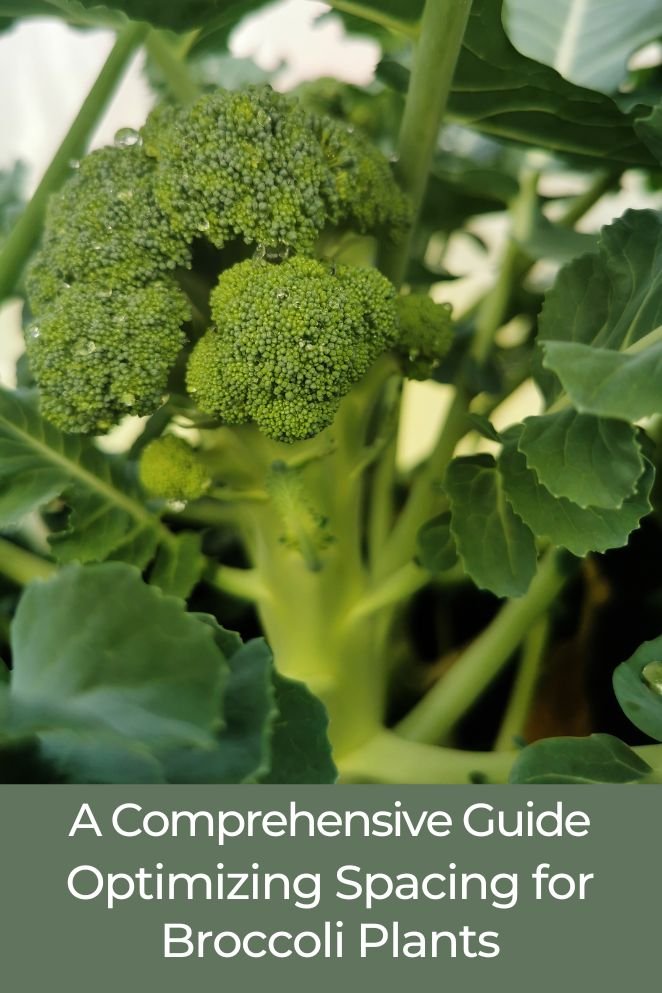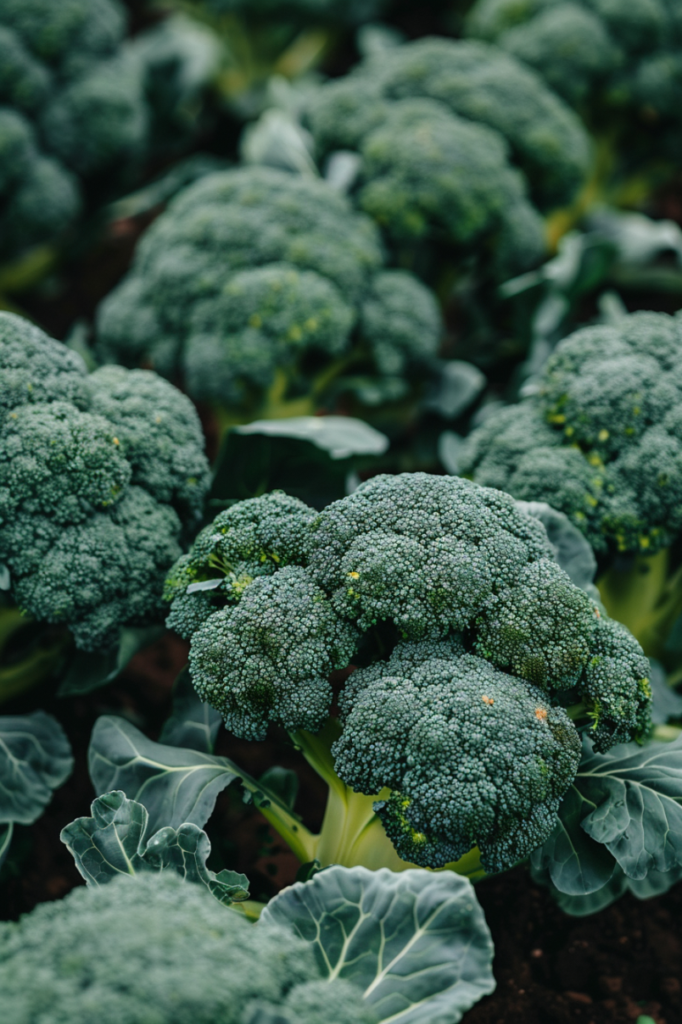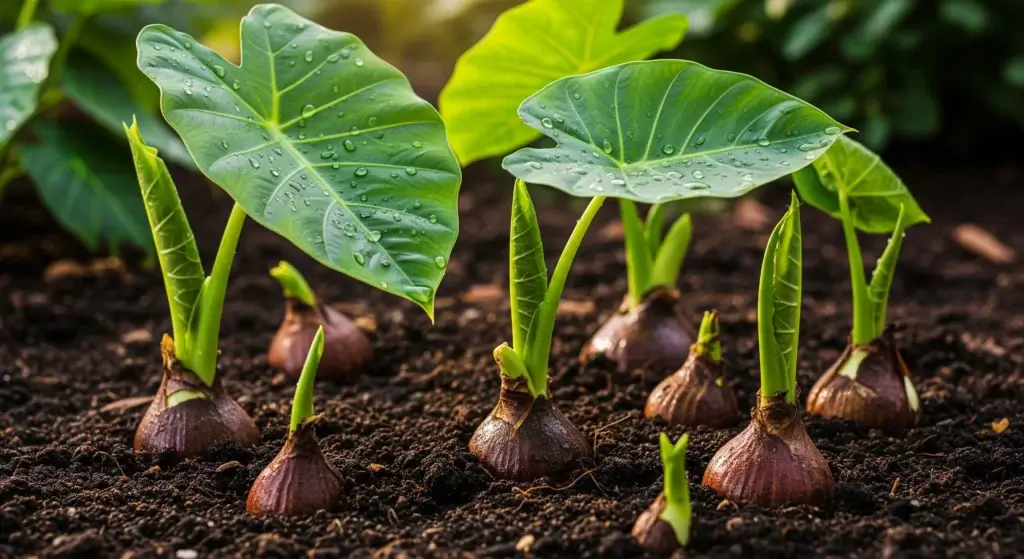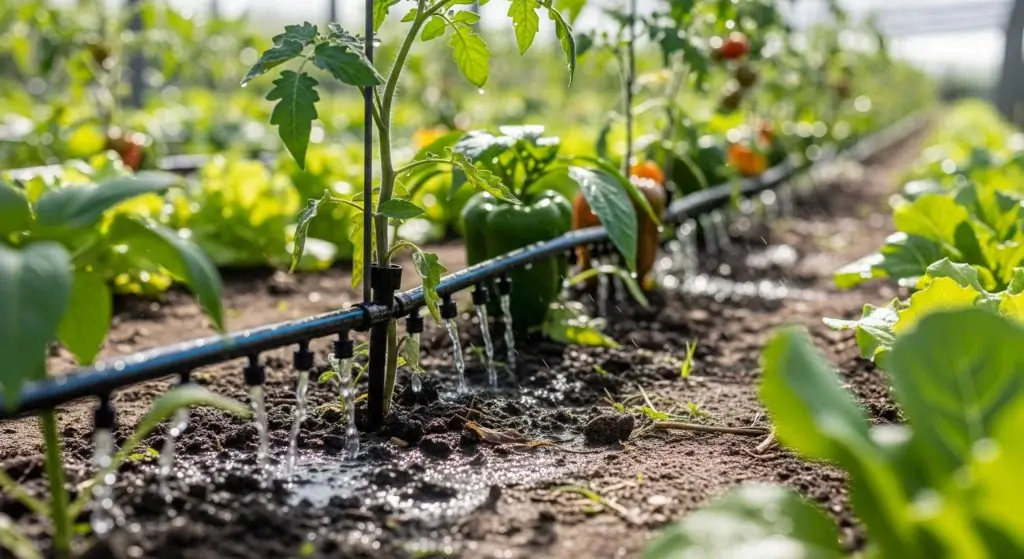
Broccoli is a popular vegetable known for its nutritional benefits and delicious taste.
However, to ensure optimal growth and yield, it’s essential to provide proper spacing for your broccoli plants.
In this blog post, we will discuss how spacing impacts broccoli growth, factors influencing spacing, spacing recommendations, and tips for maintaining proper spacing.
How Spacing Impacts Broccoli Growth
Spacing plays a crucial role in determining the success of broccoli growth and overall yield.
Let’s delve deeper into how proper spacing impacts broccoli plants:
- Read also: A Guide to Composting for Vegetable Gardens
- Read also: Troubleshooting Tomato Stem Problems
Optimal growth
Adequate spacing allows each broccoli plant to receive sufficient airflow, sunlight, and nutrients.
This promotes optimal photosynthesis and nutrient uptake, facilitating robust growth.
Without proper spacing, overcrowded plants may compete for resources, leading to stunted growth and lower yields.
Healthy development
Proper spacing ensures that each broccoli plant has enough room to develop a healthy head.
Crowded plants may become tangled or malformed, resulting in smaller or misshapen heads.
With adequate spacing, each plant can fully extend its foliage and produce larger, more flavorful heads.
Increased yield
By providing the right spacing between plants, you can maximize the number of broccoli plants grown in a given area.
This efficient use of space leads to a higher overall yield per square foot or acre.
Additionally, well-spaced plants are less prone to overcrowding-related issues, such as poor air circulation or nutrient deficiencies, which can negatively impact yield.
Reduced competition
Proper spacing reduces competition among broccoli plants for essential resources such as water, nutrients, and sunlight.
Each plant has ample space to access these resources without competing with neighboring plants.
This minimizes stress on individual plants and promotes more even growth throughout the garden or field.
Improved pest and disease resistance
Well-spaced broccoli plants experience better airflow, which helps reduce the risk of fungal diseases and pests.
Improved air circulation helps prevent the buildup of moisture on plant surfaces, which can contribute to fungal infections.
Additionally, spaced-out plants are easier to inspect for signs of pests or disease, allowing for prompt treatment if issues arise.

Factors Influencing Spacing
Several factors influence the spacing requirements for growing broccoli effectively.
Understanding these factors is crucial for optimizing plant growth and maximizing yield. Let’s explore them in detail:
Broccoli variety (maturity size)
Different varieties of broccoli exhibit varying maturity sizes, with some producing larger heads than others.
Larger-headed varieties naturally require more space to allow for proper head development.
When selecting a broccoli variety to grow, it’s essential to consider its expected mature head size and adjust spacing accordingly.
Giving each plant adequate room to grow ensures that it can reach its full potential and produce quality heads.
Planting method (single plants vs. rows)
The chosen planting method also plays a significant role in determining spacing requirements.
When planting broccoli, growers have the option to plant individual plants or arrange them in rows.
In row planting, it’s important to consider not only the spacing between plants within each row but also the spacing between rows.
This ensures that plants have sufficient room to spread out and access essential resources without overcrowding.
Proper spacing between rows facilitates ease of access for maintenance tasks such as weeding, watering, and harvesting.
Desired harvest size (larger heads need more space)
The desired harvest size of broccoli heads influences spacing requirements as well.
Larger heads require more space to develop properly, allowing each head to fully expand without crowding or competition from neighboring plants.
Growers should adjust spacing based on their desired harvest size, ensuring that plants have enough room to reach the desired size while maintaining overall plant health and vigor.
| Broccoli Variety | Planting Method | Desired Mature Head Size |
Spacing Recommendations
|
| Early | Single plant | Small |
12-18 inches apart
|
| Medium |
18-24 inches apart
|
||
| Large |
24-36 inches apart
|
||
| Row planting | Small |
18-24 inches between rows, 12-18 inches within rows
|
|
| Medium |
24-36 inches between rows, 18-24 inches within rows
|
||
| Large |
36-48 inches between rows, 24-36 inches within rows
|
||
| Mid-Season | Single plant | Small |
12-18 inches apart
|
| Medium |
18-24 inches apart
|
||
| Large |
24-36 inches apart
|
||
| Row planting | Small |
18-24 inches between rows, 12-18 inches within rows
|
|
| Medium |
24-36 inches between rows, 18-24 inches within rows
|
||
| Large |
36-48 inches between rows, 24-36 inches within rows
|
||
| Late | Single plant | Small |
12-18 inches apart
|
| Medium |
18-24 inches apart
|
||
| Large |
24-36 inches apart
|
||
| Row planting | Small |
18-24 inches between rows, 12-18 inches within rows
|
|
| Medium |
24-36 inches between rows, 18-24 inches within rows
|
||
| Large |
36-48 inches between rows, 24-36 inches within rows
|

Spacing Recommendations for Broccoli
Tips for Maintaining Proper Spacing
Here are some tips for maintaining proper spacing for broccoli plants:
Planning and planting
- Start with the right spacing: Before planting, consult a spacing chart that considers your chosen broccoli variety.
- Mark planting locations: Use stakes, markers, or even a grid system to ensure proper spacing when planting individual broccoli plants.
Thinning seedlings
- Thinning is crucial: Thinning involves carefully removing weaker or crowded seedlings to allow for proper spacing as recommended in your chart.
- Timing is key: Thin seedlings when they are young, ideally after the first set of true leaves appear (around 3-4 weeks old).
- Selection matters: When thinning, choose the strongest and healthiest seedlings to keep. Look for plants with vibrant green leaves and sturdy stems.
- Thinning techniques: Use scissors or your fingers to gently snip off unwanted seedlings at the soil level. Avoid disturbing the roots of the remaining plants.
Addressing overcrowding issues
- Early intervention is best: It’s easier to address spacing issues when plants are young.
- Transplanting (risky): In rare cases, transplanting overcrowded broccoli plants to a new location with proper spacing might be an option.
- Sacrifice vs. compromise: If transplanting is not feasible, you might need to sacrifice some plants to ensure proper spacing for the remaining ones.

Conclusion
Ensuring proper spacing is crucial for optimizing the growth and yield of your broccoli plants.
By taking into account factors such as the variety of broccoli, your chosen planting method, and the desired size of your harvest, you can provide your broccoli plants with the necessary space they need to flourish.
- Read also: Troubleshooting Common Cucumber Problems
- Read also: Troubleshooting Tomato Leaf Problems
FAQs
For single plants, space them 18-24 inches apart in rows that are 30-36 inches apart. For larger-headed varieties, increase the spacing between plants to 24-30 inches.
Proper spacing allows for adequate air circulation, sunlight exposure, and nutrient distribution, which are all essential for optimal growth.
Measure the spacing carefully when planting, monitor your plants regularly, and adjust the spacing if necessary.
Without proper spacing, your broccoli plants may not develop healthy heads, and their growth may be stunted.



